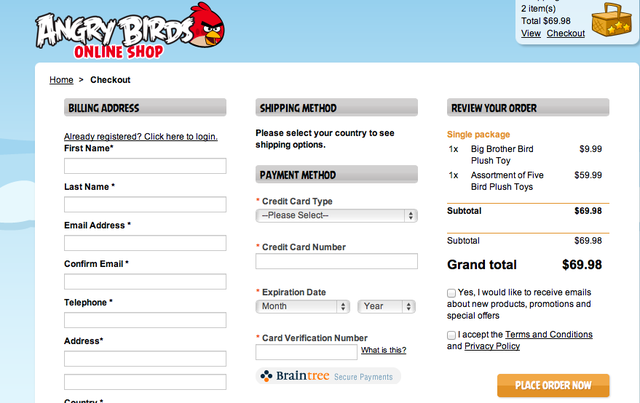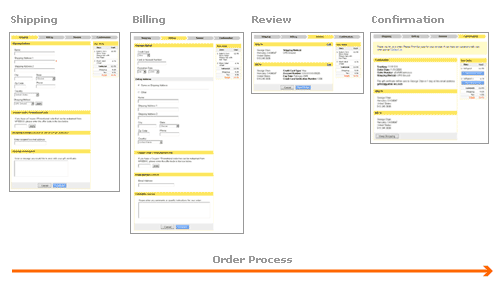A huge percentage of your shoppers may bounce before they finish the sale. They’ve already spent a lot of time browsing your site and choosing their purchase. What gives?

You’re not alone. The Baymard Institute recently looked at 19 cart abandonment studies over the last seven years, finding a 67.35% average documented online shopping cart abandonment rate. The most recent studies included are surprisingly high compared to those from past years. (In 2012 for instance, Rejoiner calculated an 80.3% abandonment rate. Yikes!)
“Price” and “shipping cost” are reasons shoppers may leave, but they’re typically factors out of your control. Your checkout page is the place to start cutting your cart abandonment rate.
Online merchants have two options for checkout: single- and multi-page. The difference between the two, however, is not so cut and dry. Which option works best for your business depends on a variety of factors. How do these two strategies compare?
Single-Page Checkout Strengths
It took some time for the eCommerce world to develop the single-page checkout. Since then, it’s become a mainstay tactic for plenty of online stores.Single-page checkout includes billing and shipping forms on the same page. The strategy typically relies on AJAX to ensure fields are filled out correctly, notifying shoppers of mistakes on the fly.
It’s hard to deny the impact it’s had on many stores’ conversion rates. In fact, A/B testing has proven the efficacy of single-page checkout.
Of course, that proof is situational. In some cases, single-page checkout doesn’t fit the bill. In the cases it does, the store tends to favor three key advantages.
1. Speed
There’s no question that single-page checkout is quicker than multi-page. With single-page, your shopper doesn’t have to wait for a next page to load.A quick and painless checkout process means less time for the shopper to get distracted or change his mind.
2. Interactivity
Because AJAX responds in real-time, fields are more interactive. They respond to the shopper’s activities, creating a more interactive checkout experience.3. Navigation
Using single-page checkout simplifies navigation for the shopper by:- Organizing everything in one place
- Showing a clear top-to-bottom path along the page
- Giving the shopper fewer reasons to hit the back button

Multi-Page Checkout Strengths
Don’t exclude multi-page checkout from your strategy just yet. True, it can be less user-friendly in certain situations. But eCommerce software suites include multi-page functionality for a reason.Multi-page checkouts should be as simple as you can make them. But sometimes more complex online business requires a more complex process.
You may want to use multi-page checkout if you value these three advantages more than those of single-page checkout.
1. Complex Orders
More complex orders may be easier for shoppers to place through multi-page checkout. Complex orders might include:- Gift orders with multiple shipping addresses
- Bulk orders of multiple products
- Special orders that may require special shipping or other extras
2. Customer Segmentation
Wholesale stores (or consumer stores with the option to buy wholesale) may need certain types of customer information before they can offer discounted pricing for bulk or special purchases. Shoppers may need to fill out a personal profile before they proceed.3. Third-Party Processing
Multiple pages may be necessary when you’re working with partners for the checkout process. Third-party situations may include:- Using PayPal or another payment processor
- Paying using an electronic layaway service
- Including partner offers in the checkout process
Find Your Fit
Remember, there’s no single approach for creating the right checkout process. It depends on your business goals and your audience. Take these into account when choosing whether to go with single- or multi-page checkout.http://www.jxtgroup.com/one-step-checkout-multipage-checkout_3914916.html?utm_source=CustomerSure&utm_medium=link&utm_campaign=Top%20100%20list

No comments:
Post a Comment